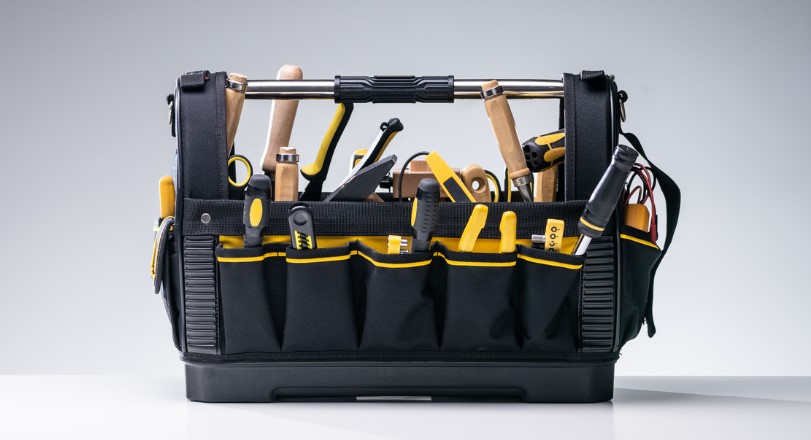Buying your first set of power tools can be a daunting task, especially if you’re just starting out in the world of DIY and construction. The market offers a wide range of models with different features and prices, and it can be challenging to figure out what’s worth spending money on and what you can do without. This guide will help you understand which power tools are essential for beginners and how to choose them without overspending on unnecessary features.
5 Power Tools to Choose on First Set Without Overspending
1. Drill Driver: Your Versatile Helper

The first and possibly the most important power tool in a beginner’s arsenal is the drill driver. This multifunctional tool is useful for most household tasks, from drilling holes to driving screws. When choosing a drill driver, pay attention to the following features:
- Power: A tool with 10-14 volts is sufficient for most household tasks.
- Rotational Speed: Opt for models with adjustable speed, which will allow you to adapt the tool for different tasks.
- Battery: It’s better to choose models with lithium-ion batteries, as they hold a charge longer and are lighter in weight.
2. Jigsaw: For Precise Cuts
A jigsaw is the perfect power tool for making curved and straight cuts in wood, plastic, and other materials. This tool is essential for woodworking, furniture making, and many other projects. When choosing a jigsaw, consider the following:
- Power: For home use, a model with 500-700 watts is sufficient.
- Speed Control: This feature helps you control the cut depending on the material.
- Dust Extraction System: A useful feature that helps keep your workspace clean.
3. Sander: Smooth Surfaces with Ease
A sander is a power tool that helps you achieve perfectly smooth surfaces, whether it’s wood, metal, or plastic. For beginners, it’s recommended to choose an orbital sander, as it is easy to use and suitable for most tasks. Key parameters include:
- Pad Size: 125 mm is an optimal choice for household tasks.
- Speed Control: It’s useful to have variable speed for working with different materials.
- Replaceable Sanding Discs: Make sure the model you choose supports standard replaceable discs that are easy to find in stores.
4. Angle Grinder: The All-Purpose Cutter

An angle grinder, also known as a grinder, is a powerful power tool that comes in handy for cutting metal, stone, and other hard materials. It is indispensable for repairs, construction, and demolishing old structures. Important points to consider when choosing an angle grinder:
- Disc Diameter: For home use, models with a disc diameter of 115-125 mm are suitable.
- Power: 700-900 watts is sufficient for most tasks.
- Dust Protection: Since grinders create a lot of dust, models with dust protection will last longer.
5. Hammer Drill: For Hard Materials
A hammer drill is a power tool needed for drilling holes in concrete, stone, and brick. This tool is essential for repair and construction work. When choosing a hammer drill, consider the following:
- Power: 800-1000 watts is sufficient for home use.
- Chuck Type: An SDS+ chuck is suitable for most household tasks.
- Modes of Operation: Choose models with multiple modes (drilling, hammer drilling) to have the versatility needed for different tasks.
Conclusion
Choosing your first set of power tools can be challenging, but with the right approach, you can assemble a quality and reliable set without overspending. Start with the basic power tools like a drill driver, jigsaw, sander, angle grinder, and hammer drill. These tools will cover most household needs, and purchasing them will be a great investment in your home and your skills.
Author Profile

- Blogger by Passion | Contributor to many Business Blogs in the United Kingdom | Fascinated to Write Blogs in Business & Startup Niches |
Latest entries
 BusinessDecember 12, 2025The Smart SME’s Guide to Future-Proofing Physical Assets
BusinessDecember 12, 2025The Smart SME’s Guide to Future-Proofing Physical Assets FinanceOctober 28, 2025How to Measure the ROI of Your Promotional Product Campaigns?
FinanceOctober 28, 2025How to Measure the ROI of Your Promotional Product Campaigns? Home & LivingOctober 4, 2025Moving Forward When Leicester Family Dynamics Change
Home & LivingOctober 4, 2025Moving Forward When Leicester Family Dynamics Change BusinessSeptember 22, 2025Always-On SMEs: The UK Business Owner’s Guide to Seamless Travel Data for Sales Trips, Trade Fairs & Remote Teams
BusinessSeptember 22, 2025Always-On SMEs: The UK Business Owner’s Guide to Seamless Travel Data for Sales Trips, Trade Fairs & Remote Teams





